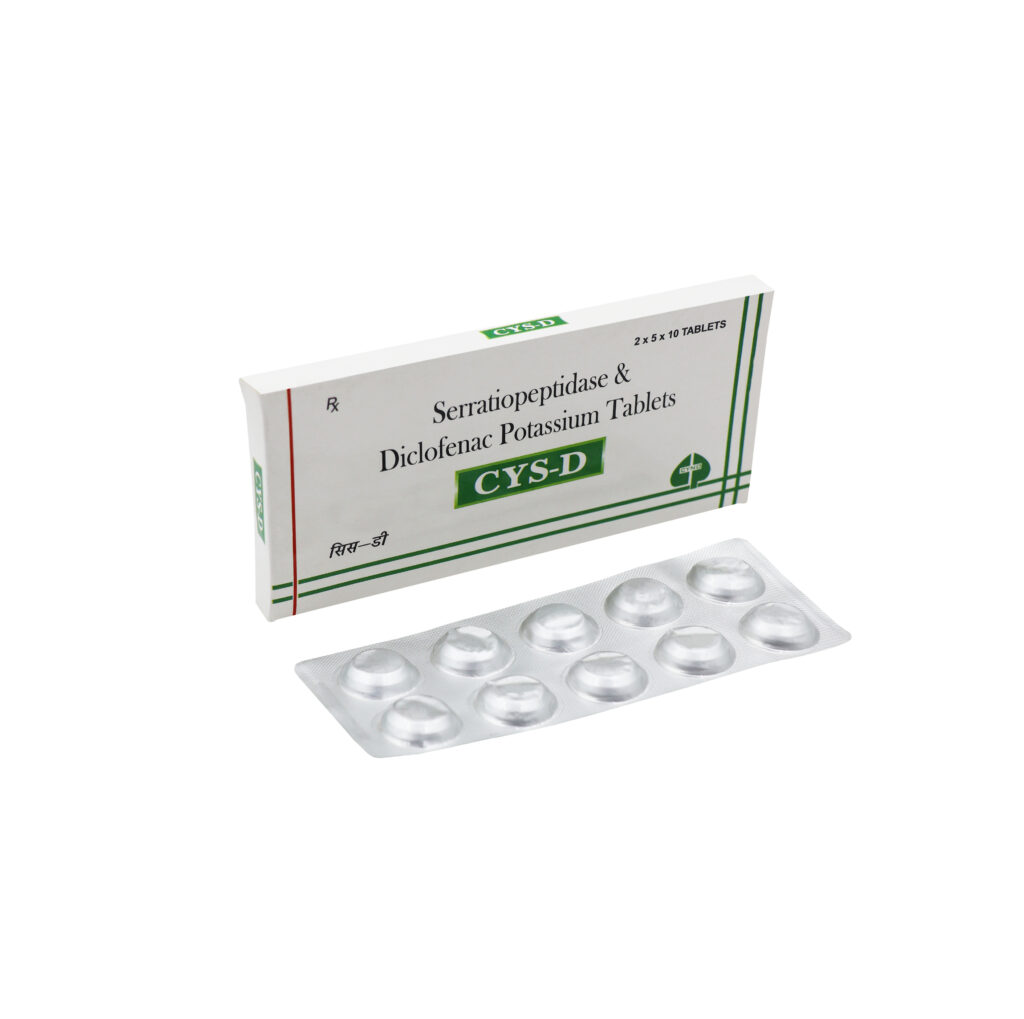Mechanism of Action
Diclofenac Potassium, safe and potent NSAID’S for pain relief in cardiac and diabetic patients. When combined with serratiopeptidase, a proteolytic enzyme, there is faster resolution of pain, inflammation and tenderness.
Diclofenac Potassium
The primary mechanism responsible for its anti-inflammatory/antipyretic/analgesic action is inhibition of prostaglandin synthesis by inhibition of cyclooxygenase (COX).
Serratiopeptidase
It is a proteolytic enzyme derived from serrati SPP. Serratiopeptidase is a proven proteolytic enzyme that exerts a direct mucolytic action breaks the mucus and promotes expectoration and helps in antibiotic penetration.
Pharmacodynamics
High enzymatic activity and potent anti-inflammatory effect with inhibition of Cox-2 suppressing prostaglandin and bradykinin hydrolysis. Helps in faster healing of trauma.
Pharmacokinetics
Bioavailability-100%; Protein – binding more than 99%; Metabolism – hepatic, no active metabolites exist; Half life – 1.2-2 hr (35% of the drug enters enterohepatic recirculation); Excretion – biliary, only 1% in urine.
Indications
Pain and oedema, Tendonitis, Dental extractions, Episiotomy, Breast engorgement, tonsillectomy, Oedema after ocular surgery, Bronchiectasis.
Adverse Effects
Diclofenac is among the better-tolerated NSAID’S. Though 20% of patients on long-term treatment experience side effects, only 2% have to discontinue the drug, mostly due to gastrointestinal complaints. Contraindication Hypersensitivity against diclofenac, History of allergic reactions (bronchospasm, shock, rhinitis, urticaria) following the use of Aspirin or another NSAID, Third-trimester pregnancy.
Half life
1.2-2 hr (35% of the drug enters enterohepatic recirculation)
Contraindications
Blood coagulation abnormalities disturbance or under treatment with anticoagulants.
Onset of action
1 hour duration of action – 12 hours.
Children
Use with caution.
Pregnancy
Use with caution.
Breast-feeding
Use with caution.
Old age
Use with caution.
Information on this website is for general awareness only and not a substitute for professional medical advice, diagnosis, or treatment. Always consult a qualified doctor before using any product or taking any medical action.
Cyno and its affiliates make no warranties—express or implied—regarding the accuracy or completeness of the information provided. Use of this website and reliance on its content is at your own risk. Cyno shall not be liable for any loss or damage arising from such use. Content may be updated or changed without notice.

WhatsApp us